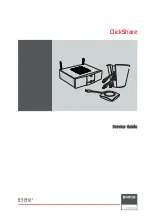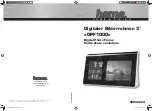
xiMU - Technical Manual Version 2.10
59
Rolling shutter artifacts may be prevented by using a flash or stroboscopic light. The flash or strobe must occur when all lines are
exposed simultaneously. The exact timing depends on sensor type and readout timing.
figure 4-7, rolling shutter mode with flash - schematic
In Rolling shutter mode all lines are triggered consecutively, and a strobe must be timed so that it does not start before all lines
are open. The delay can be calculated from the highest frame rate and is 1/fps. The strobe must also end before the first lines
are closed again for exposure, which sets a lower limit for the exposure time, as can be seen in the figure above.
4.4.2.
Global Reset Release Mode
•
Global reset of all photo diodes
•
Integration stage
•
Transfer, conversion and readout line by line starts at the end of the integration of the first line. Not transferred line stays in
integration stage until readout of particular line starts. This leads to different exposure time for individual lines. Each next line
has exposure longer by readout of one line.
figure 4-8, global reset release mode - schematic
Artifacts caused by subject movement
Because of the longer exposure of the lower lines they may be show increased blurring if the object moves.
figure 4-9, global reset release mode, image horizontally moved object
To freeze the motion, a flash may be used. In contrast to rolling shutter mode the flash strobe does not need to be delayed.
figure 4-10, global reset release mode with flash - schematic
Readout
Flash strobe
Exposure
Time
L
in
e
s
Readout
Exposure
Time
L
in
e
s
Flash strobe
Readout
Exposure
Time
L
in
e
s
















































